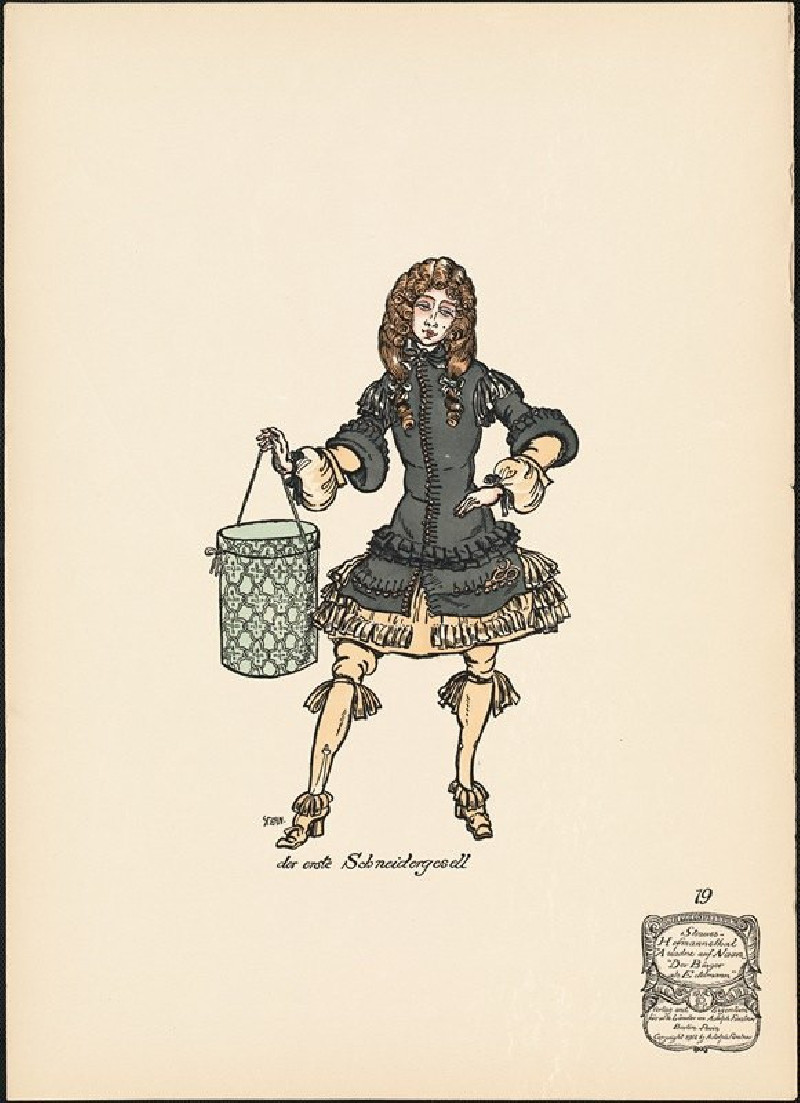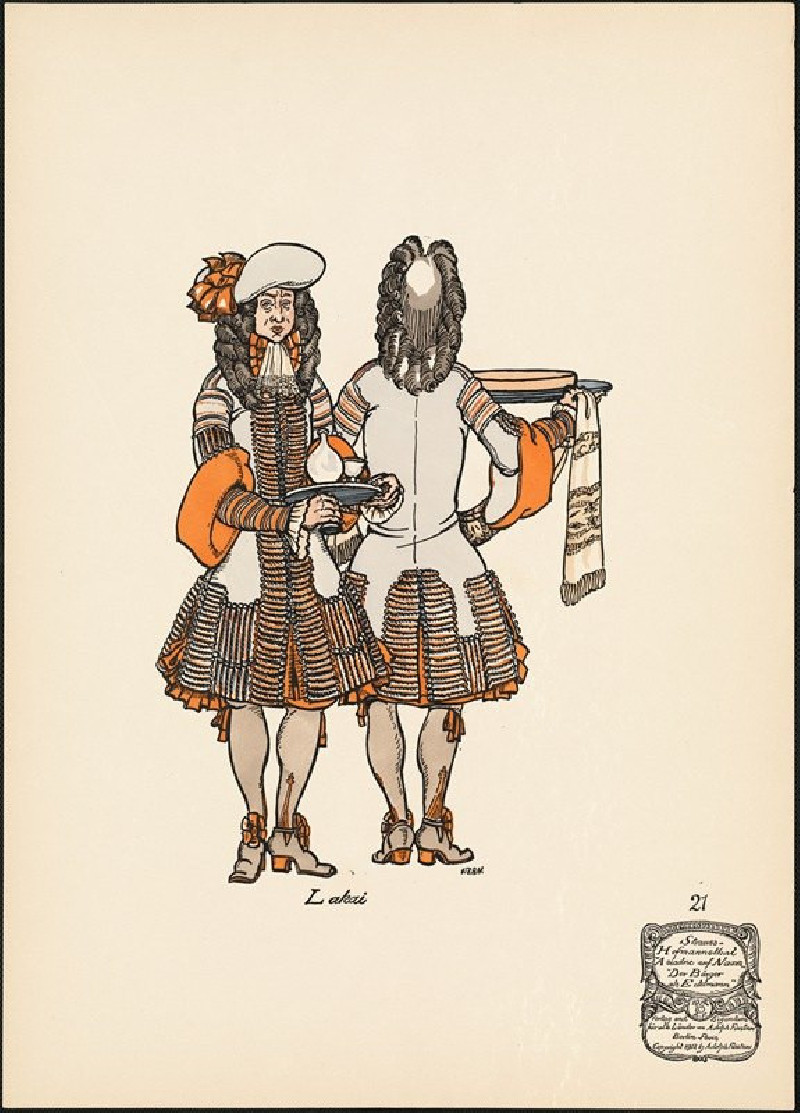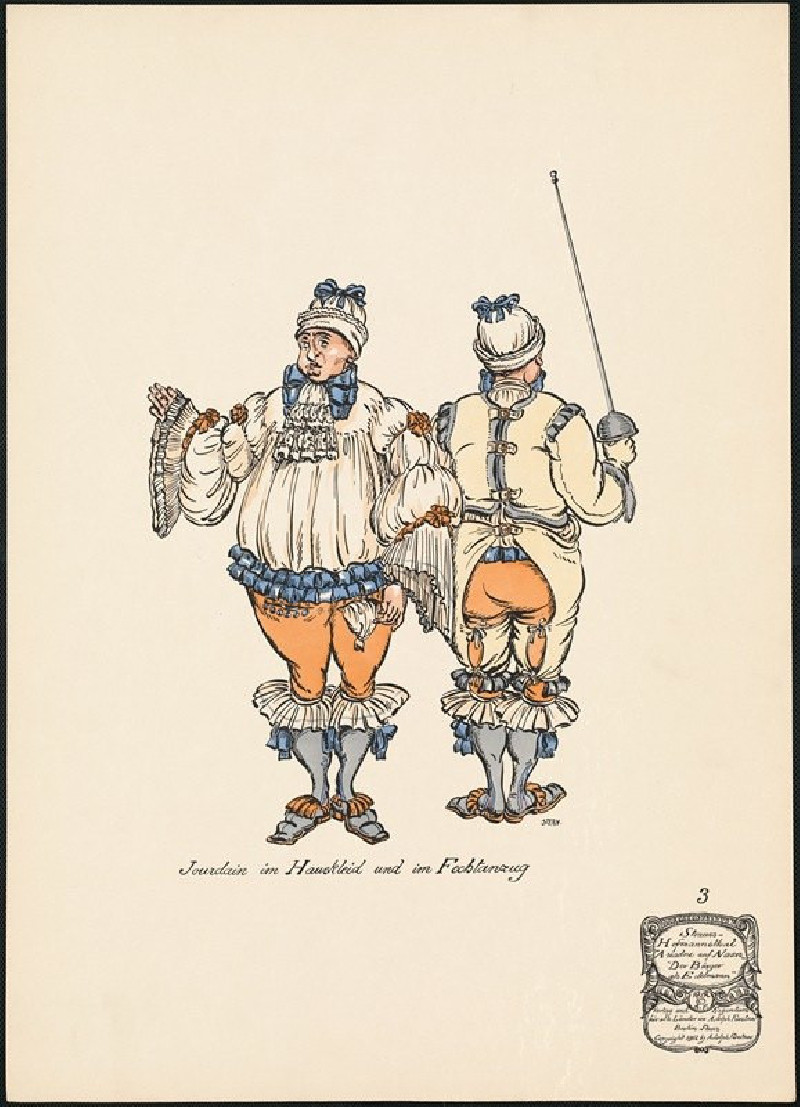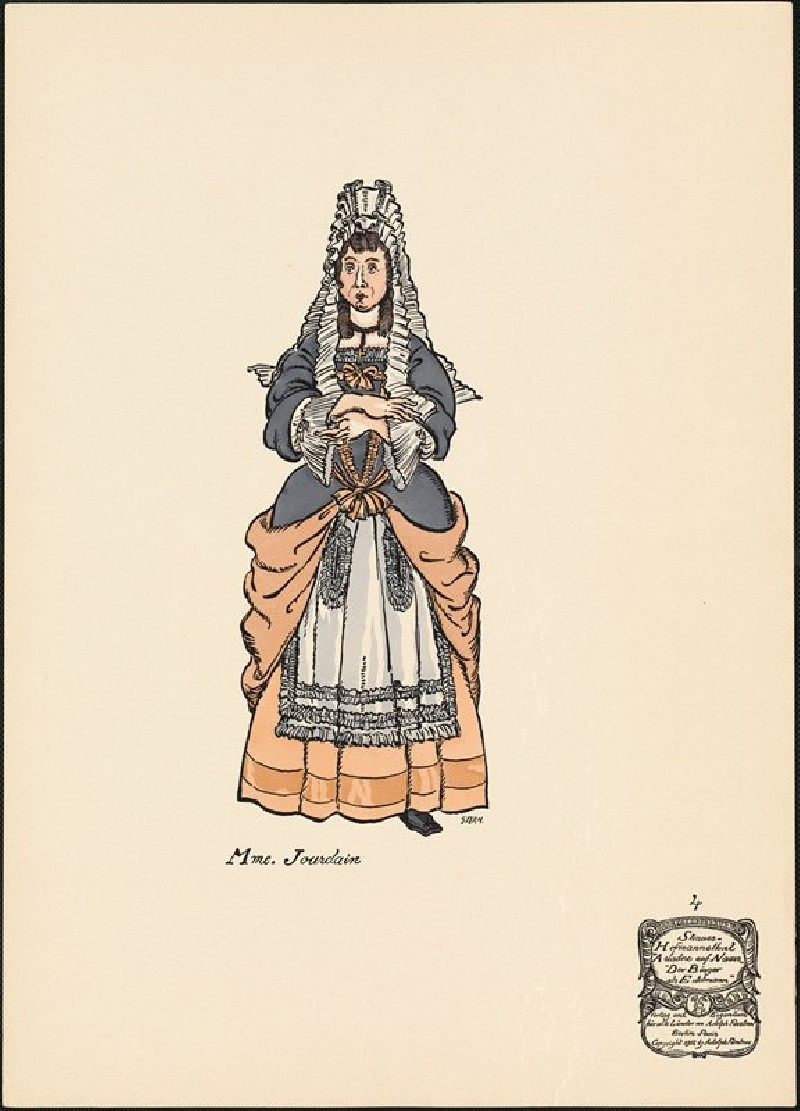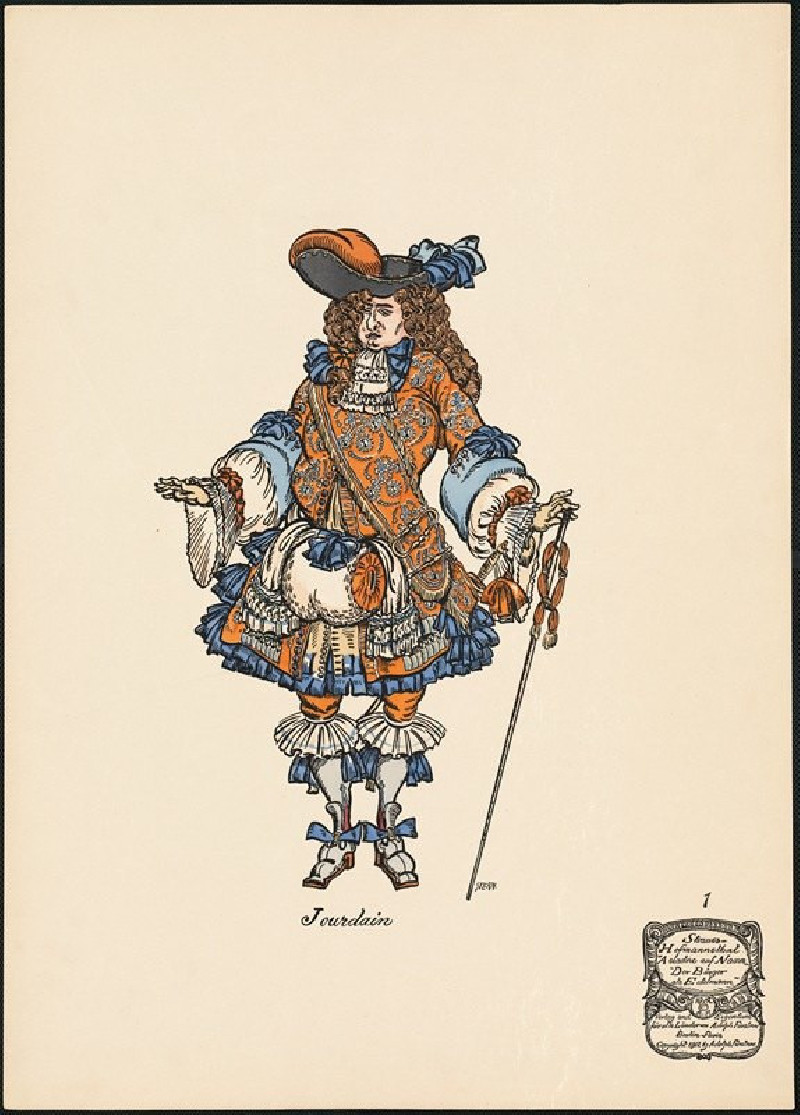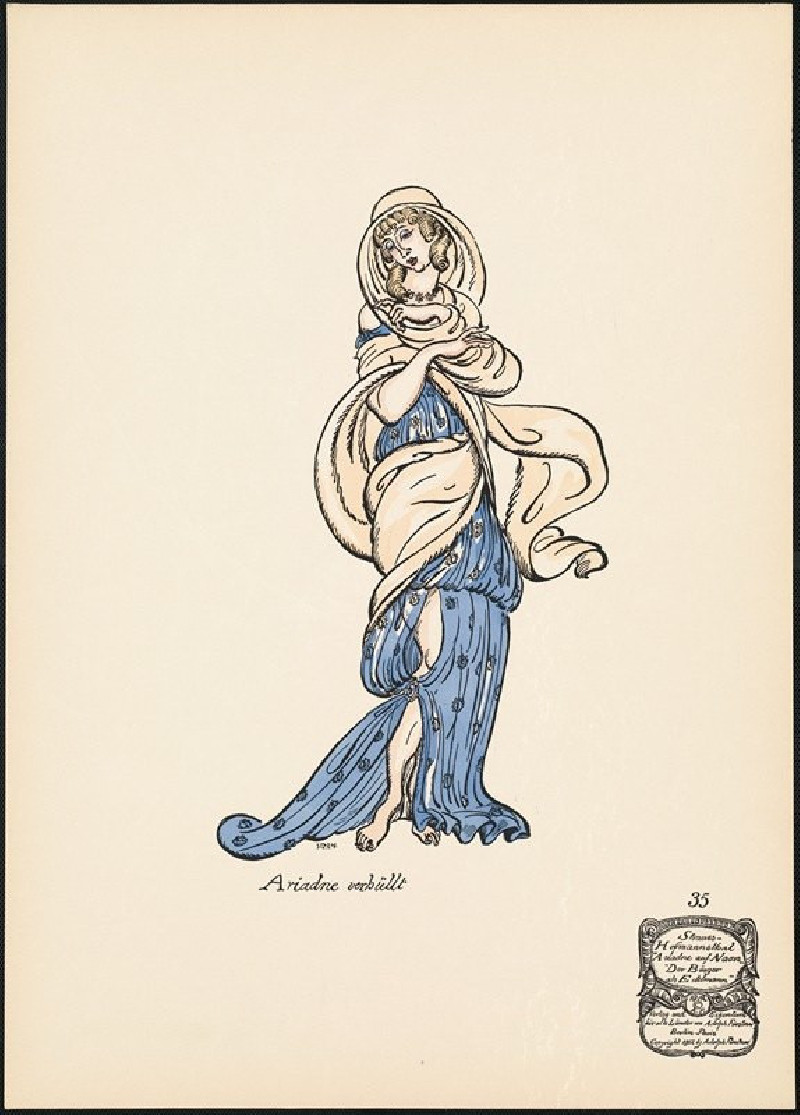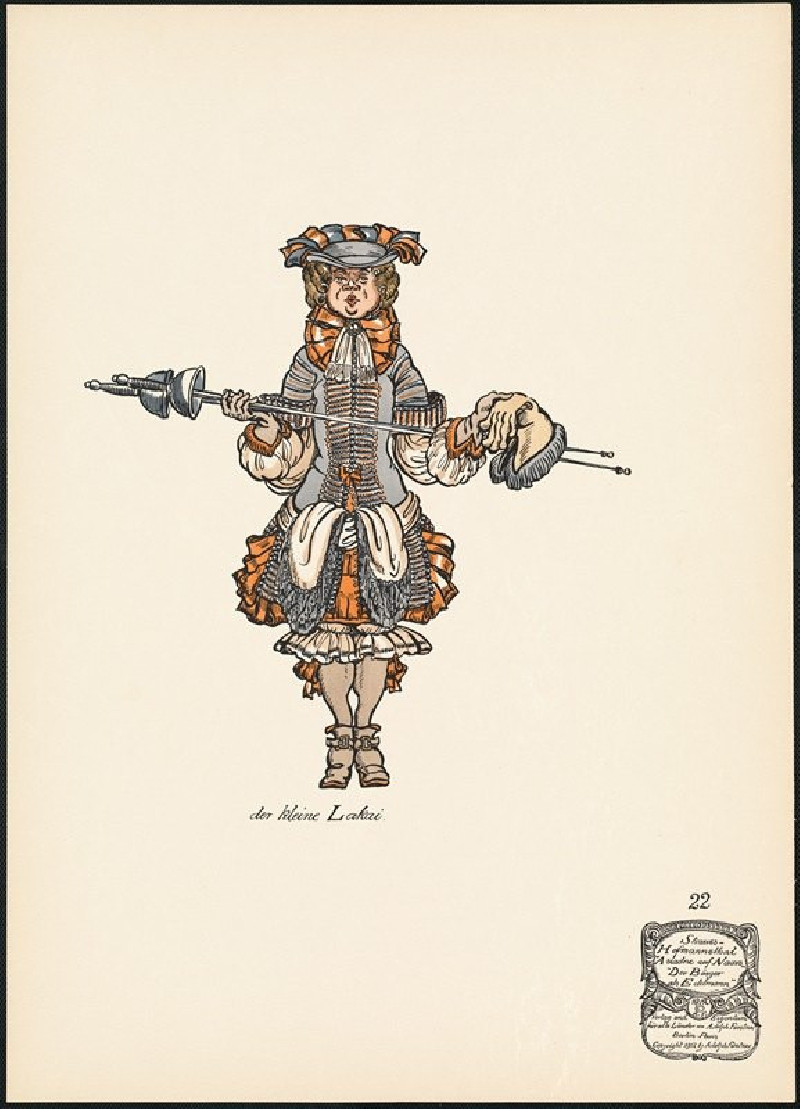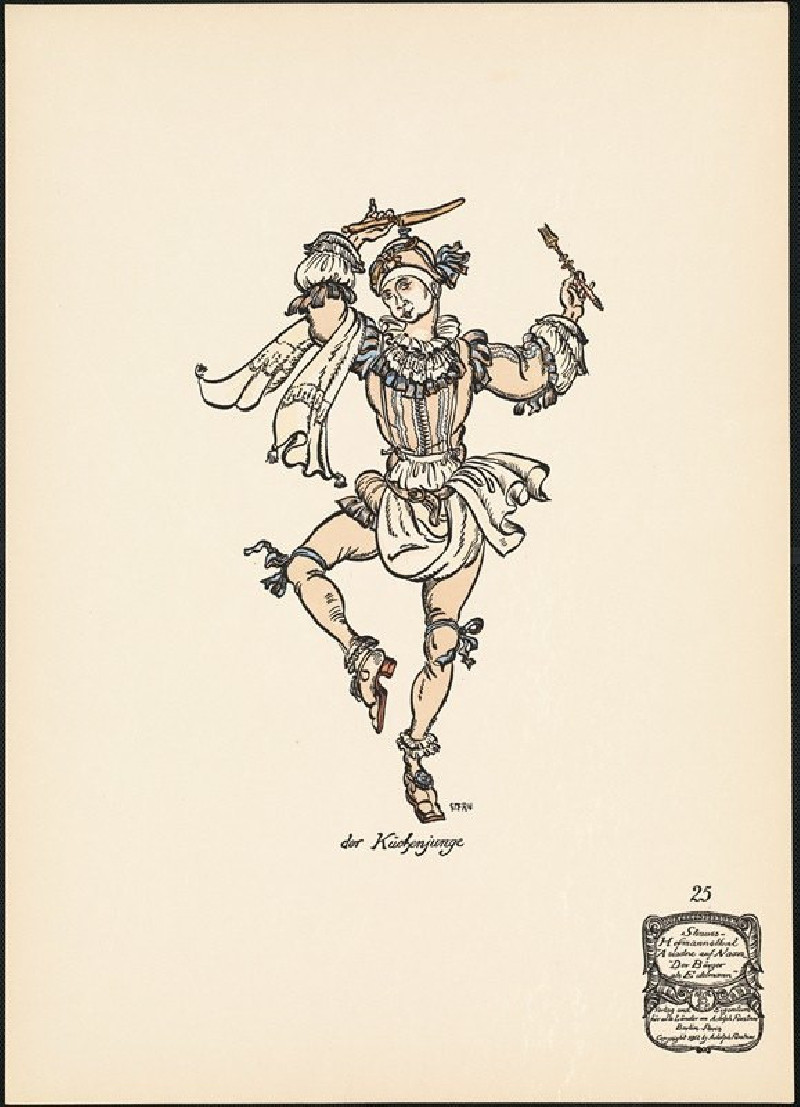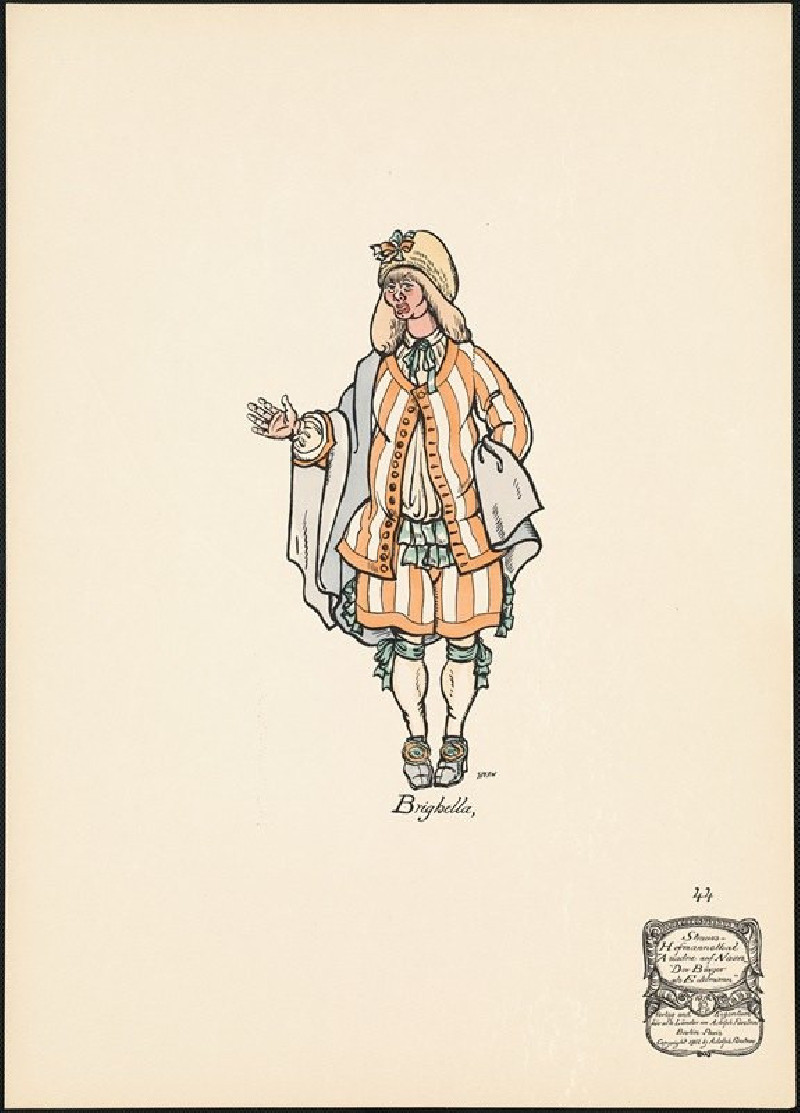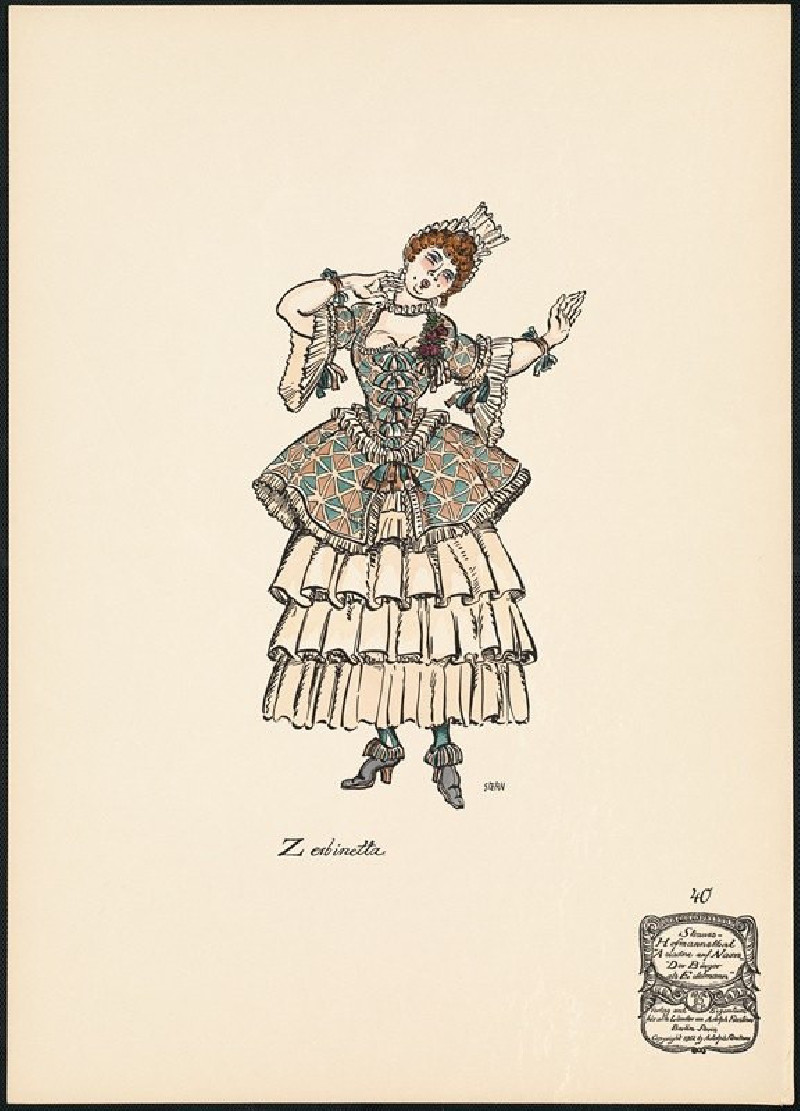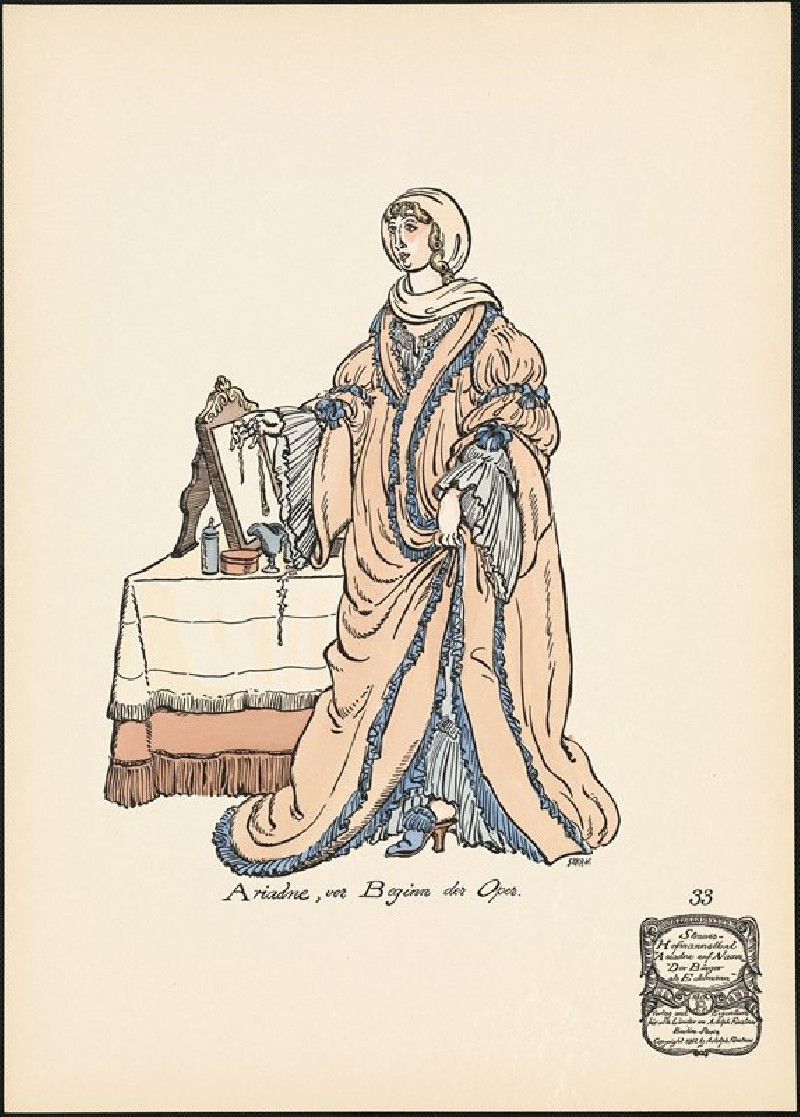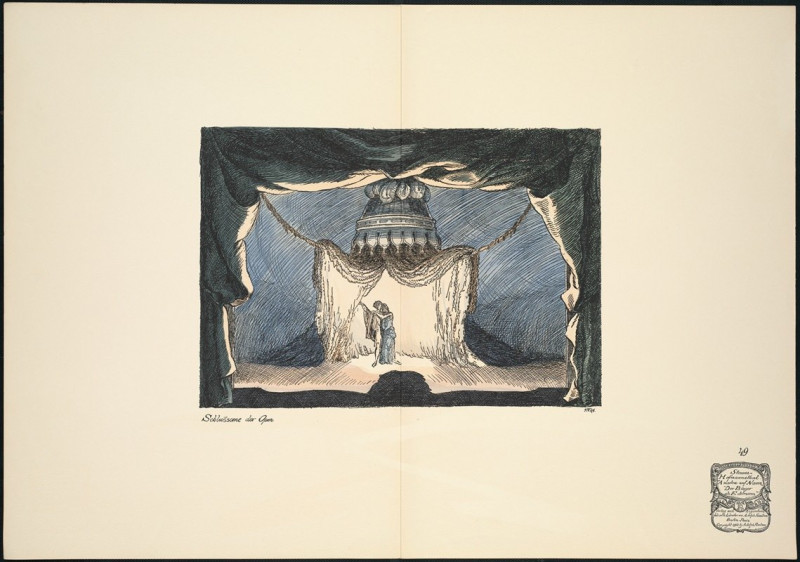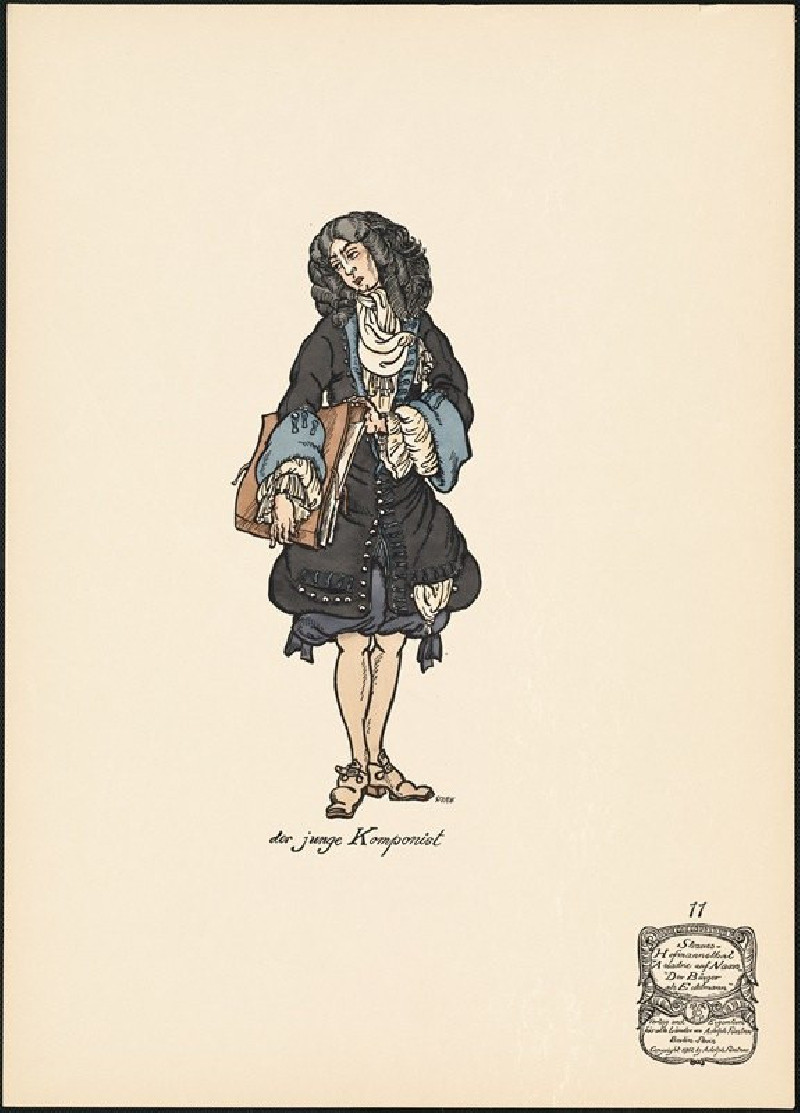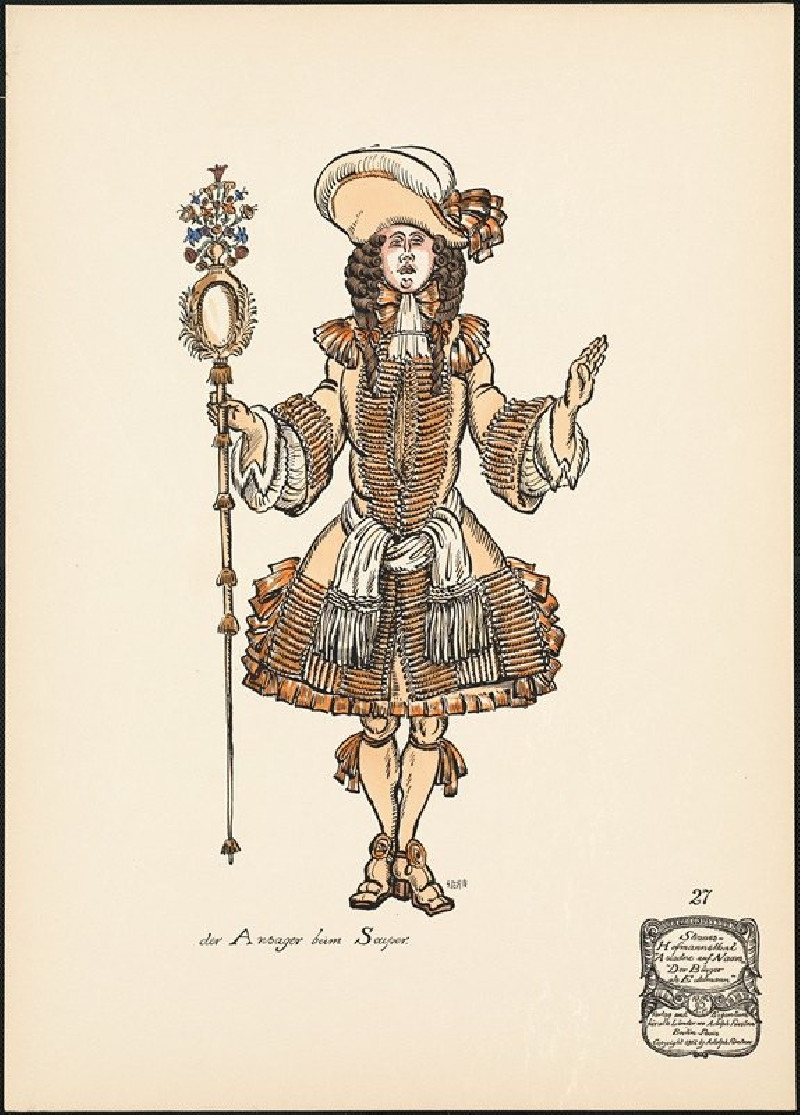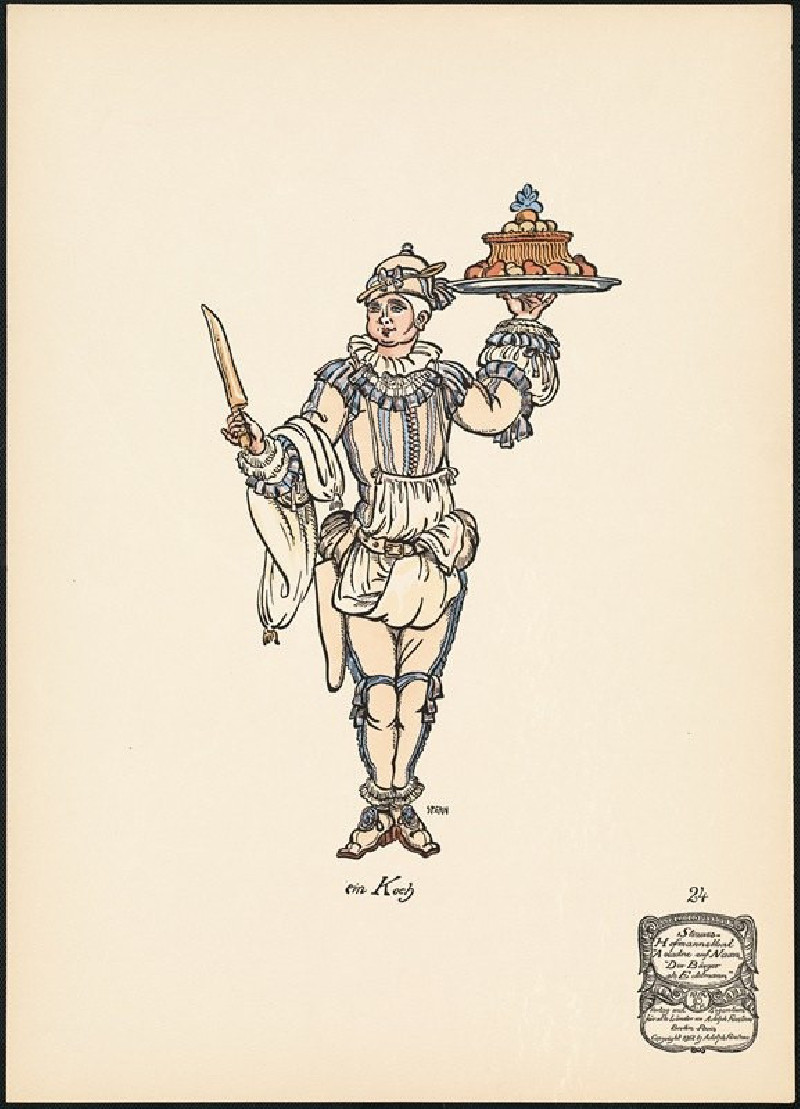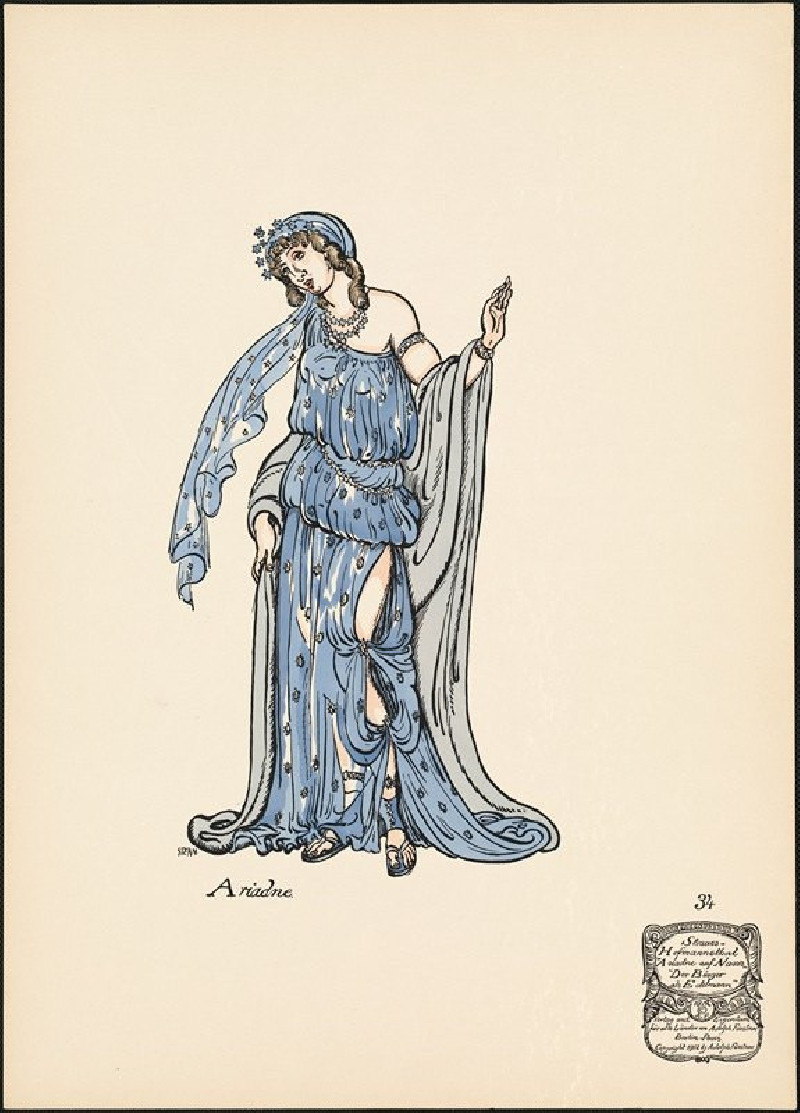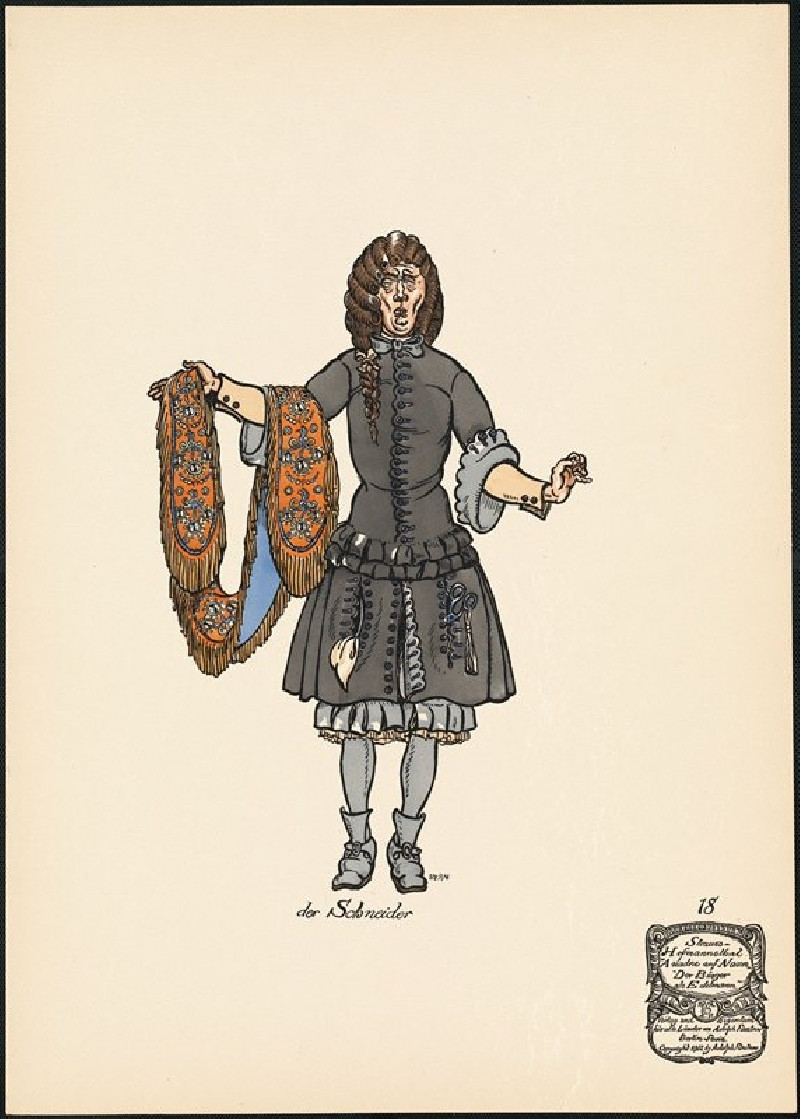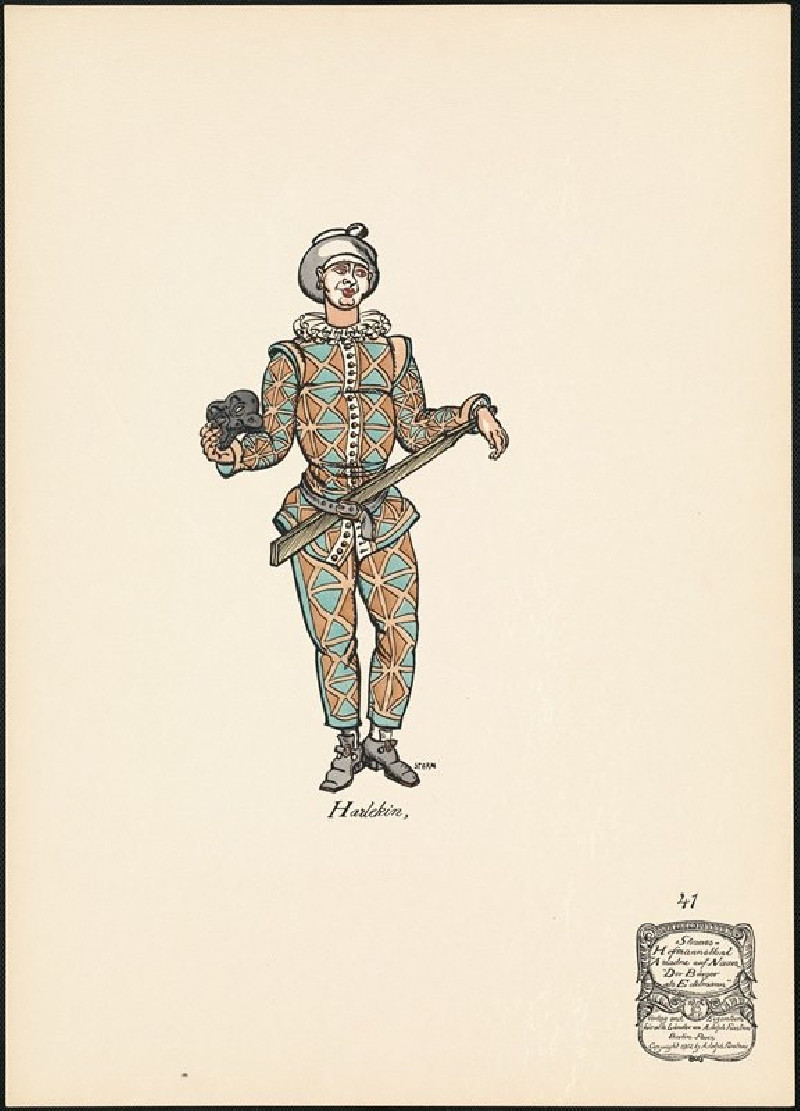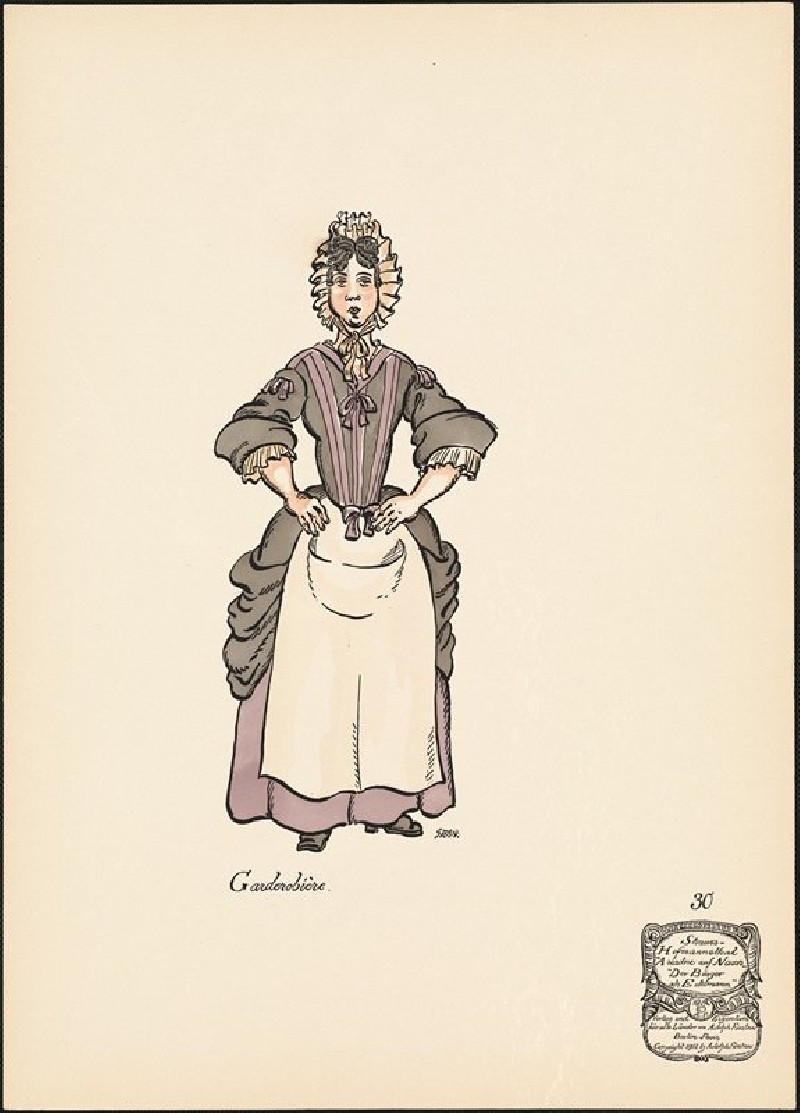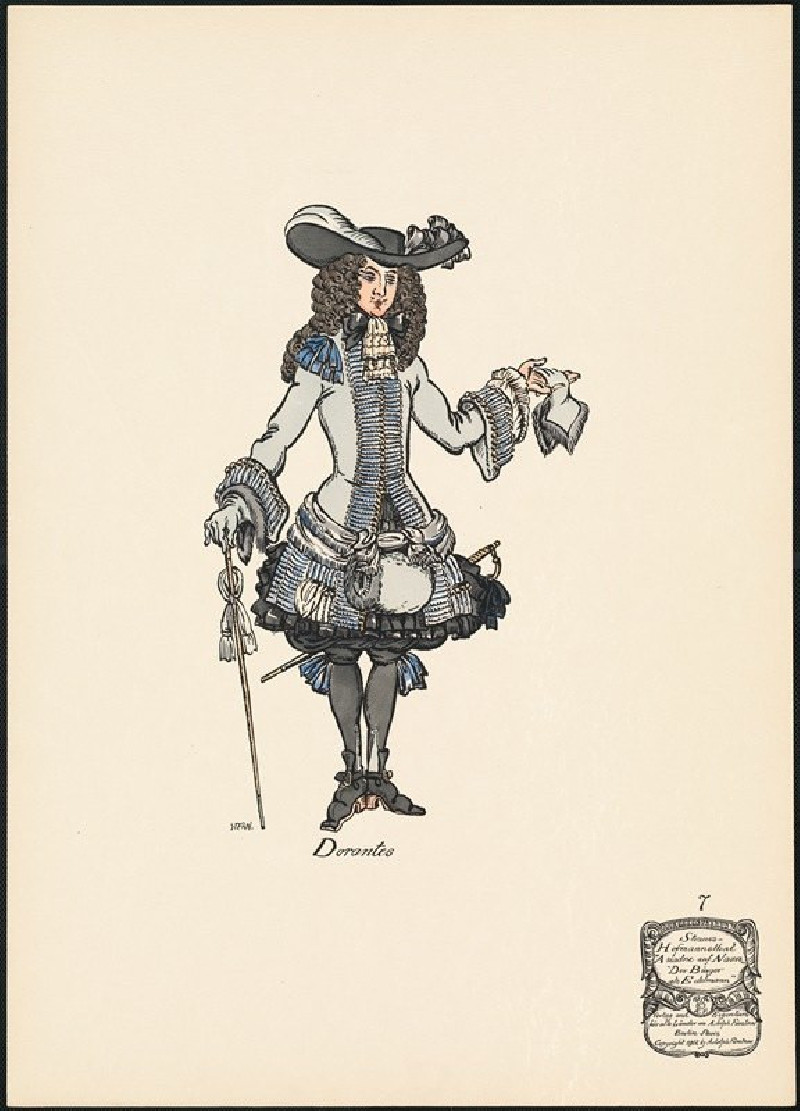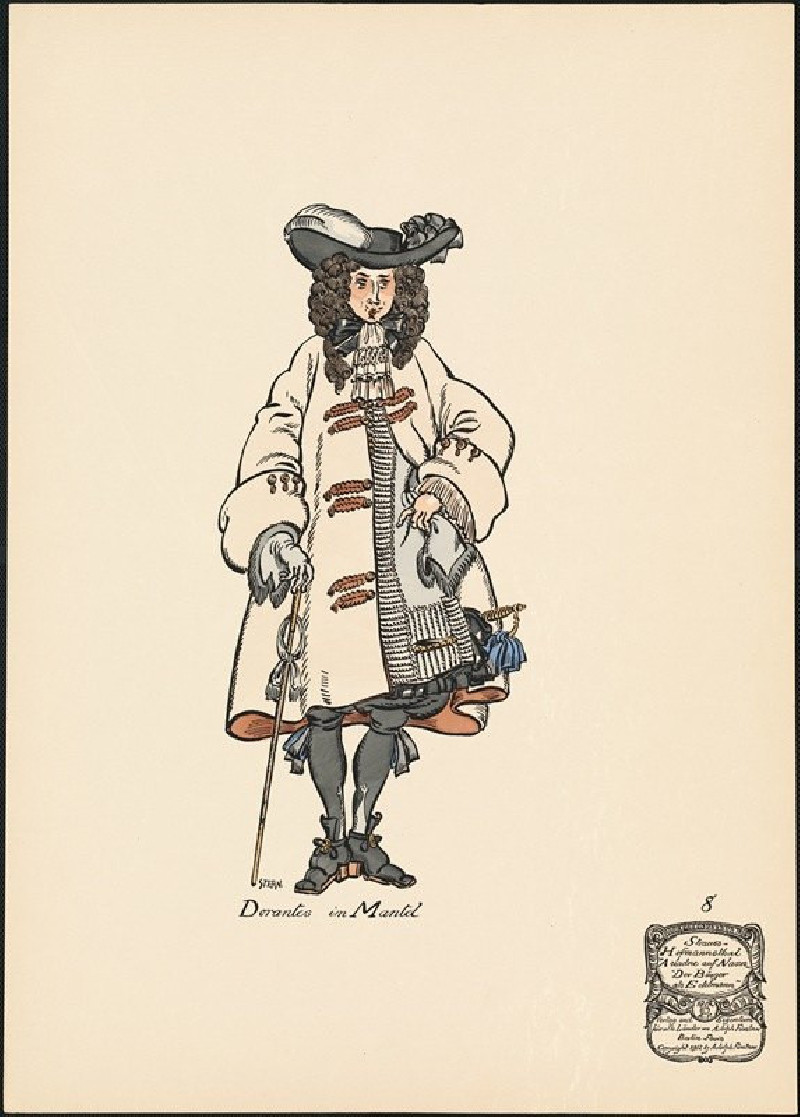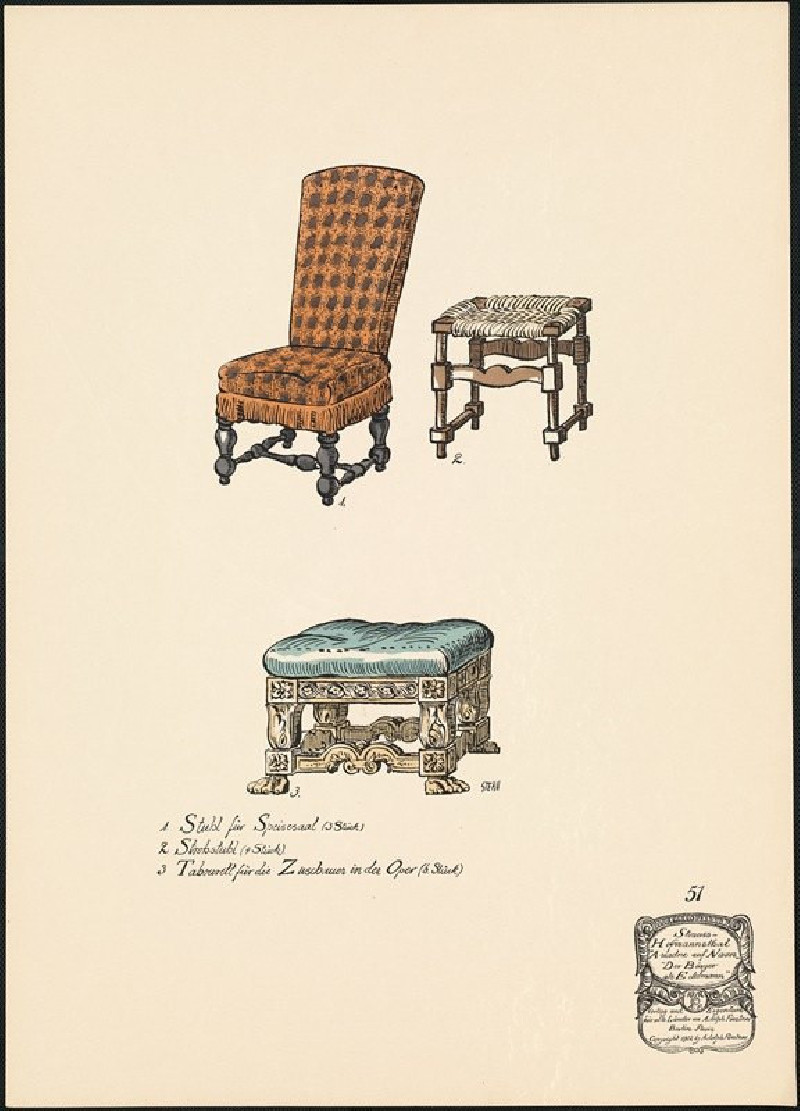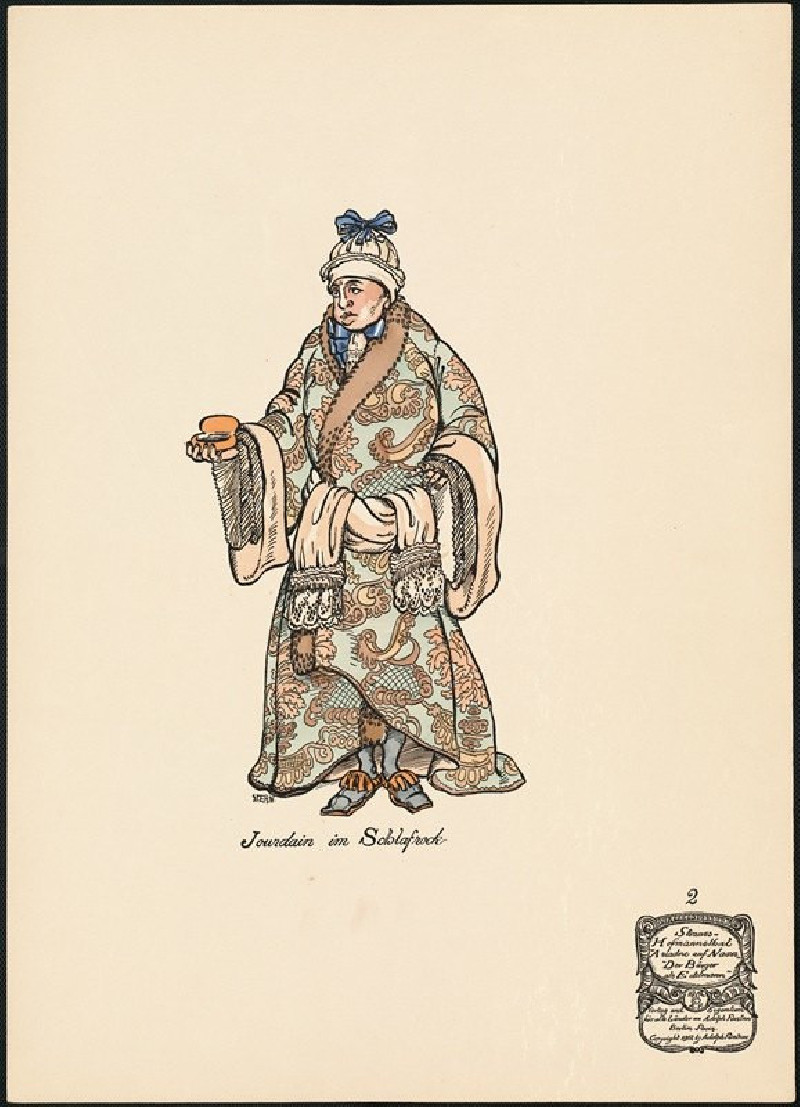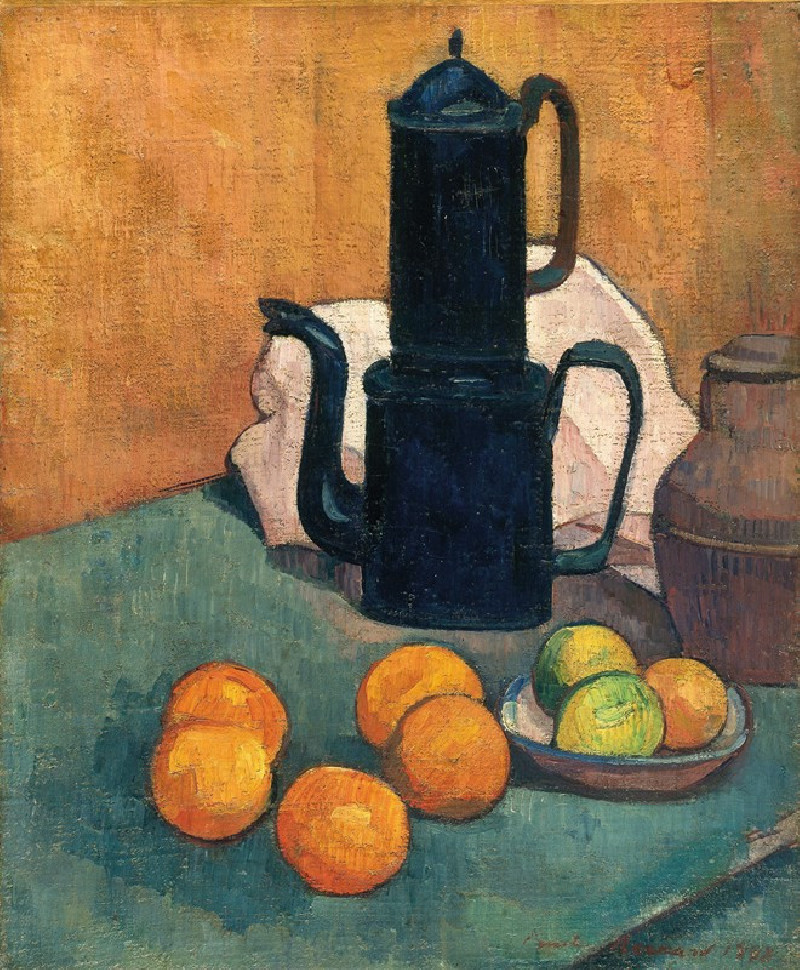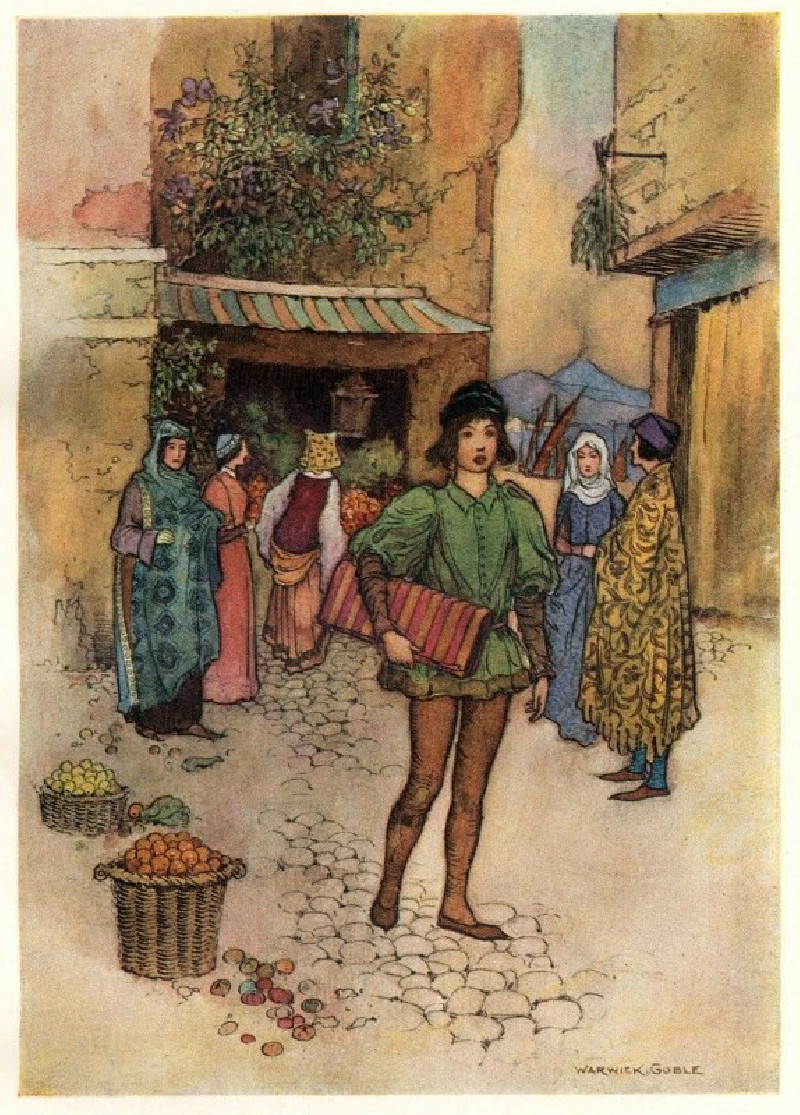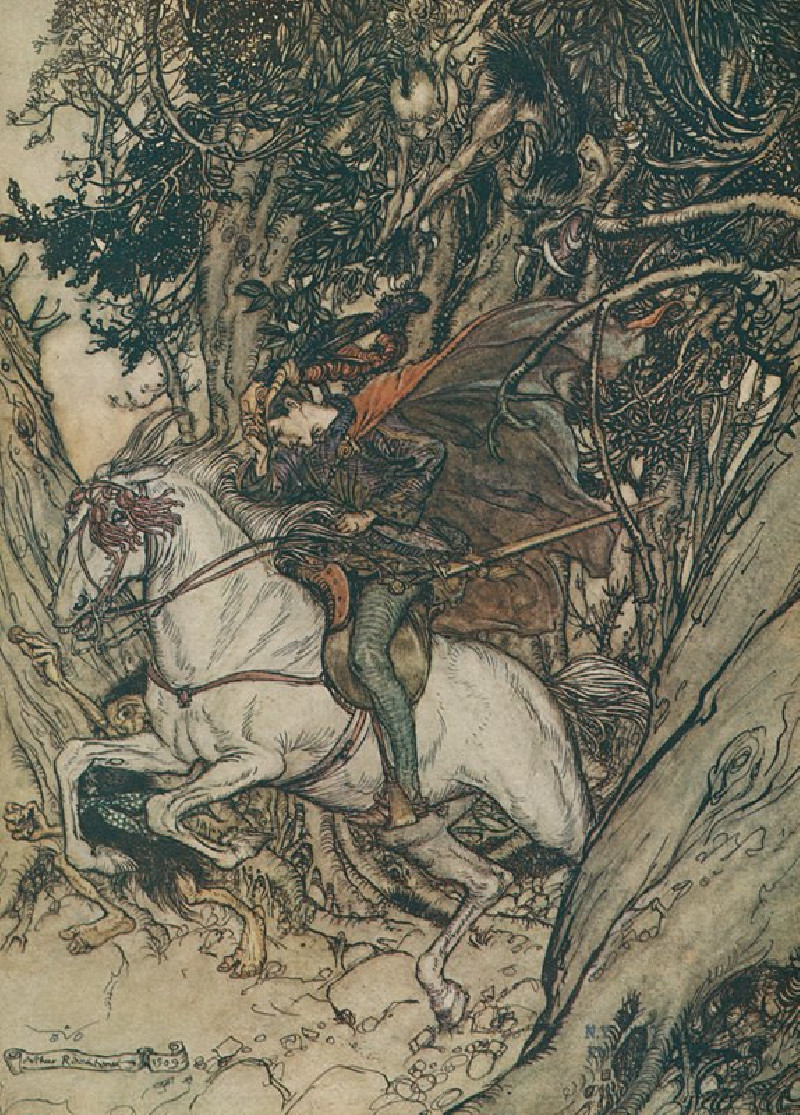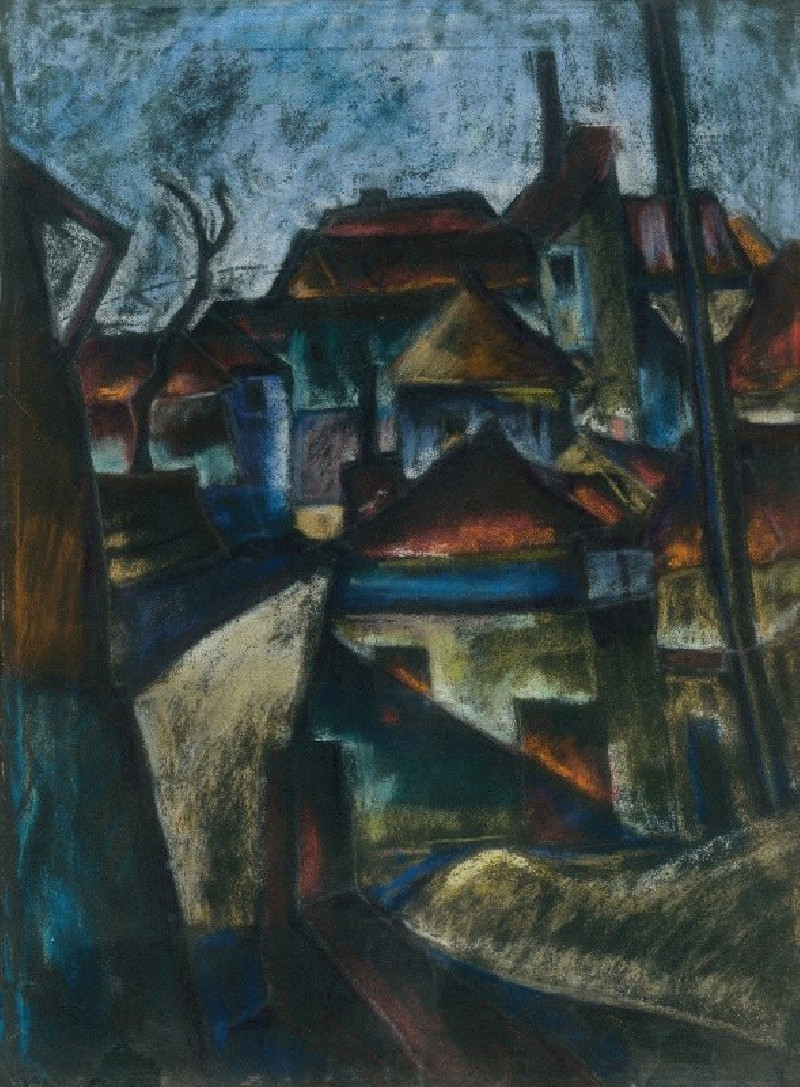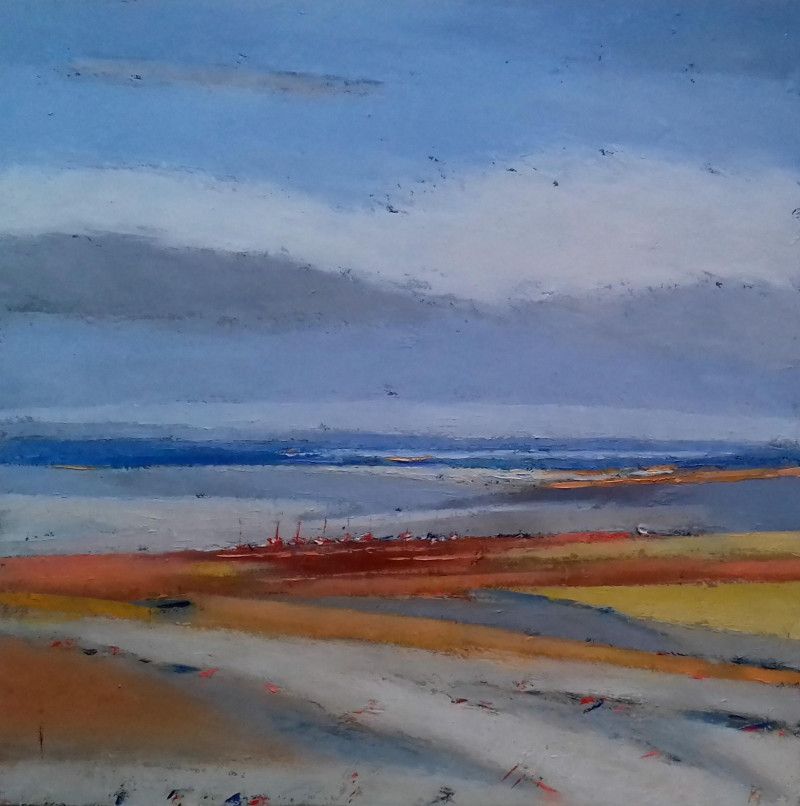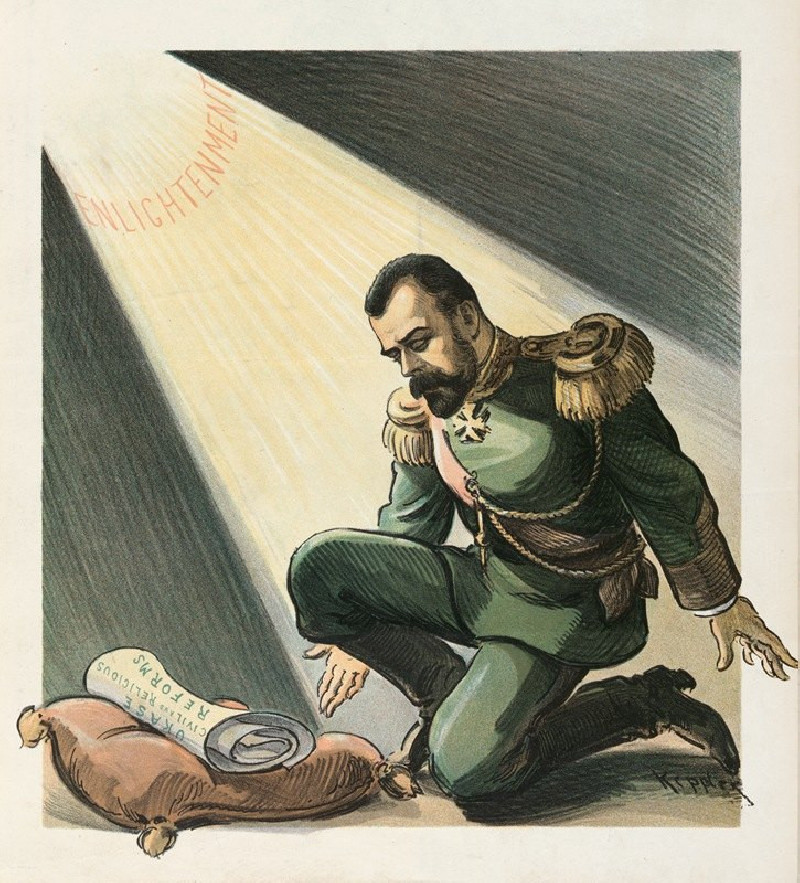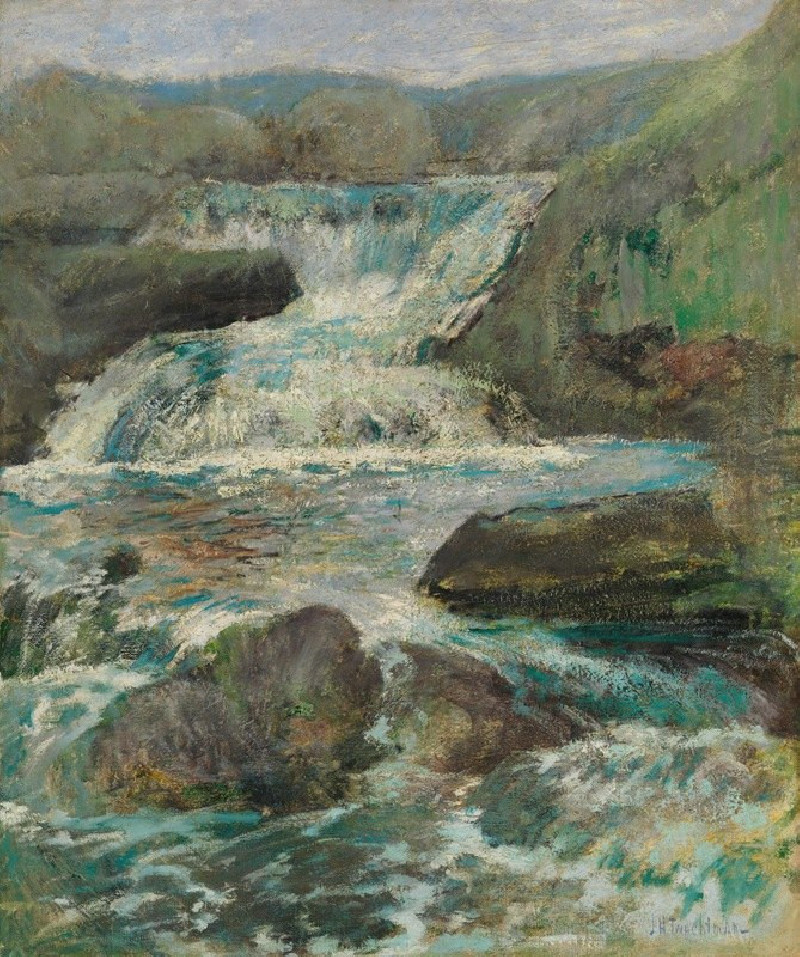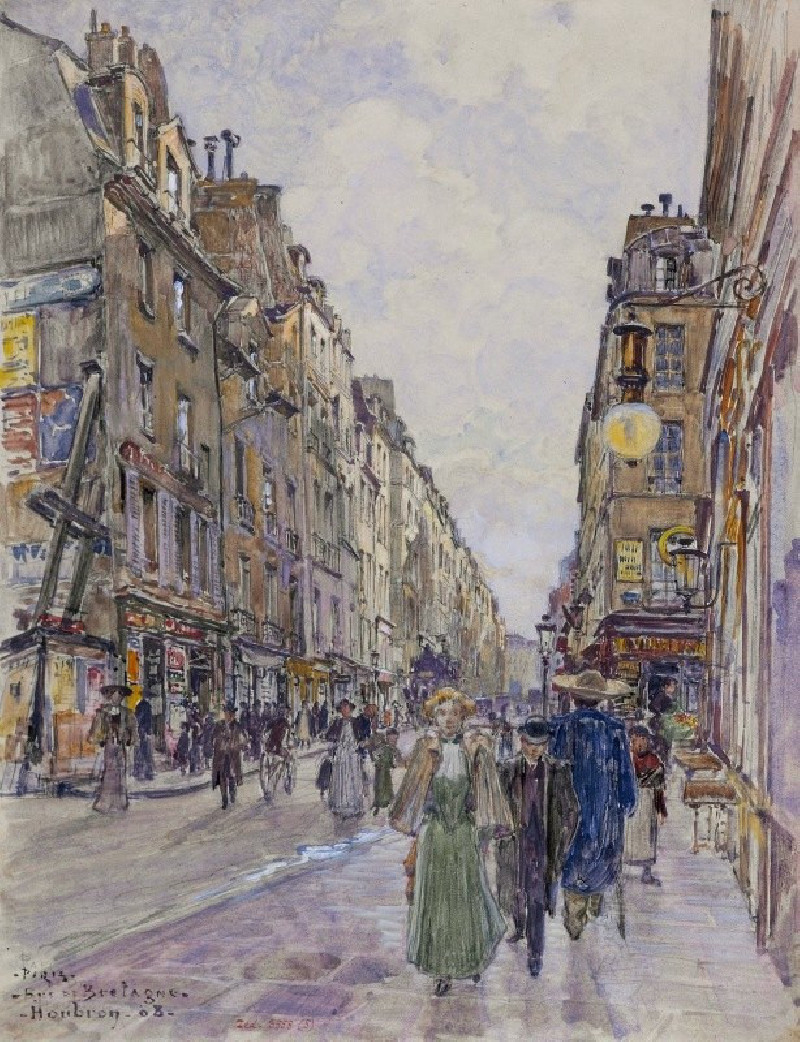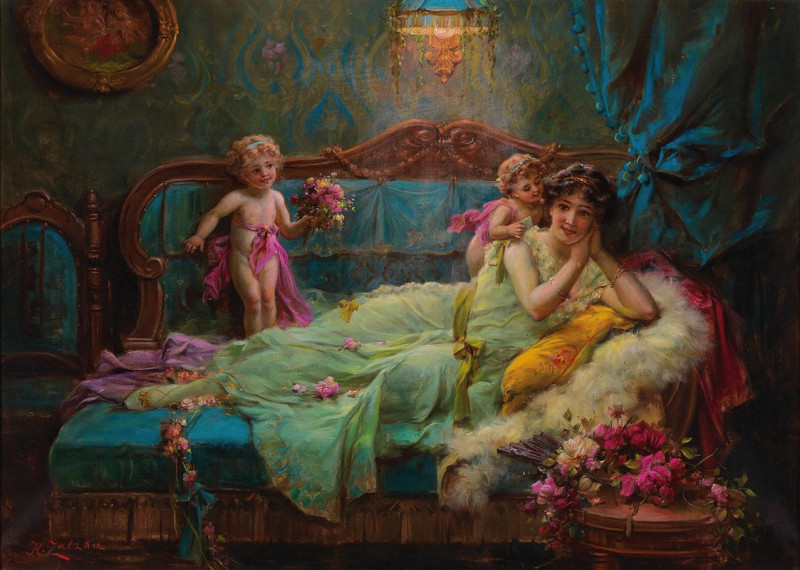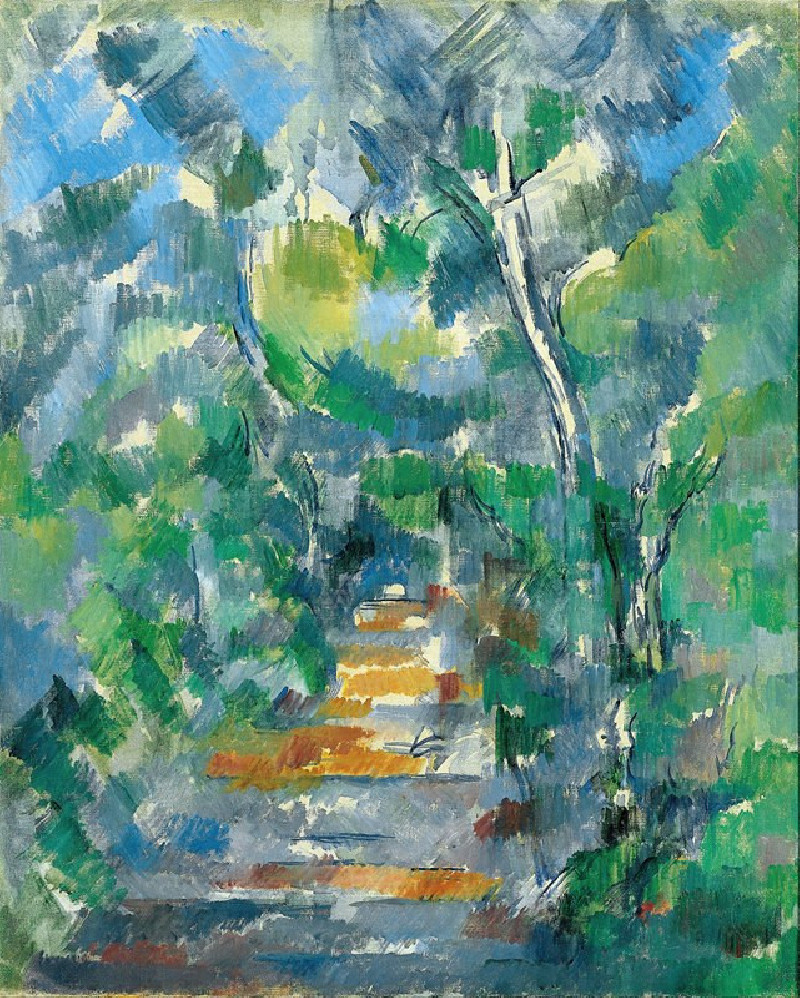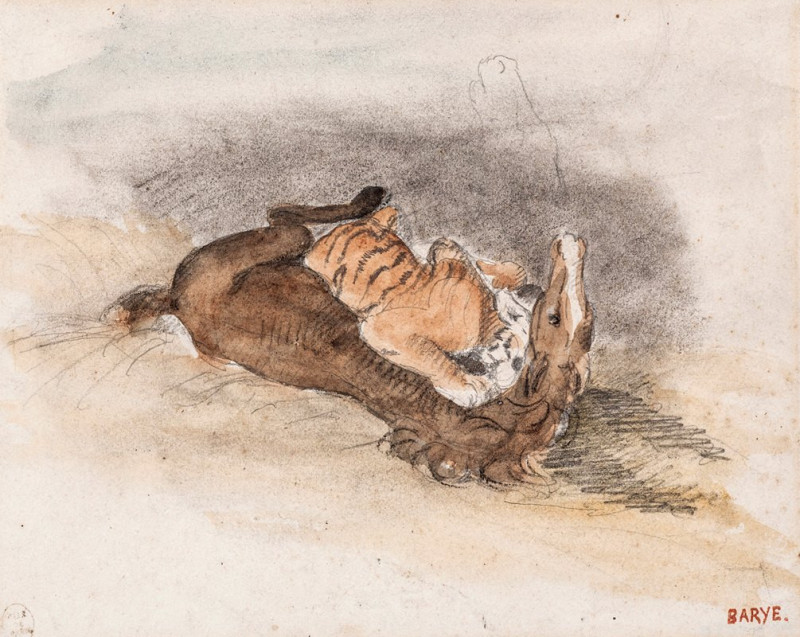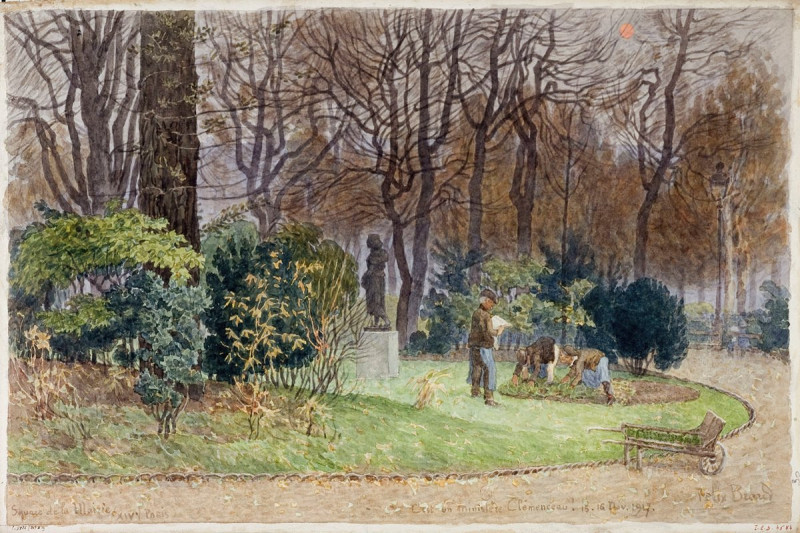Dorimene mit Mantille (1912)
Technique: Giclée quality print
Recommended by our customers
More about this artwork
Ernst Stern's 1912 artwork, "Dorimene mit Mantille," is a striking depiction that transports the viewer into a bygone era of fashion and grace. The illustration features an elegant lady, possibly of noble descent, adorned with an ornate costume that exemplifies early 20th century high fashion. Her attire includes a detailed and layered dress enriched with textural contrasts, accompanied by a lace mantilla (a traditional Spanish lace or silk veil worn over the head and shoulders). The woman's confident posture and the refinement in her attire, combined with her peering over her shoulder, suggest a narrative of poised expectancy mixed with a touch of regality.This dignified depiction not only showcases Stern's attention to detail and his proficiency in capturing the essence of fabric and form but also serves as a cultural reflection on the period's fashion sensibilities. The drawing, characterized by its elegant line work and minimal yet effective use of color, underlines the artist’s ability to convey sophistication and character through simple yet powerful strokes.


